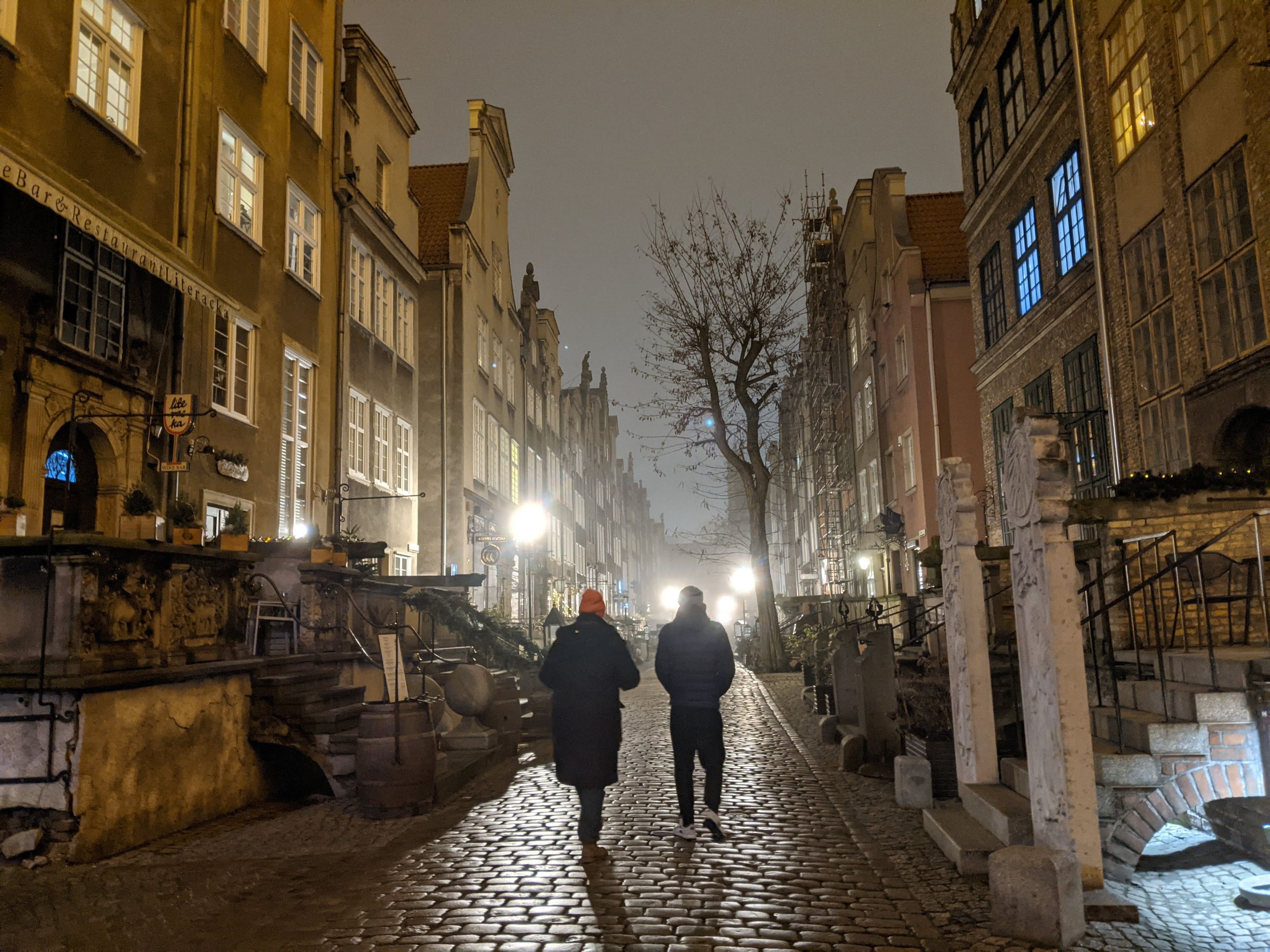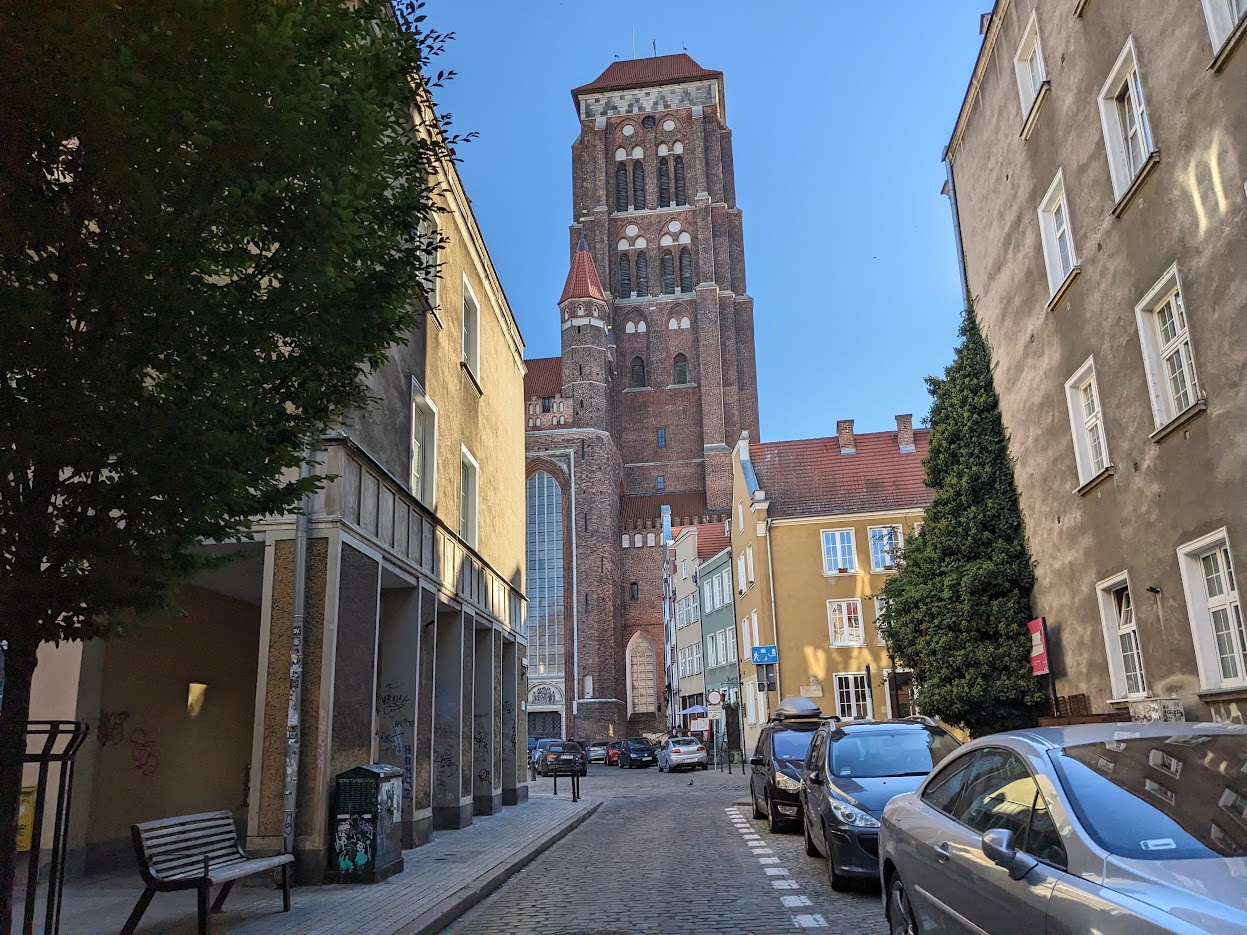
Jeden dzień, mnóstwo widoków (26wrz)

It was a city in a unique setting. First, the family walk took place on Christmas Eve evening. This family holiday is most often spent at home at the table, so the streets were empty. Secondly, the fog was so thick that you couldn't see the ships moored on the other side of the river. Just keep an eye out for overcoat characters from British detective novels.
To było miasto w wyjątkowej scenerii. Po pierwsze rodzinny spacer odbył się w wigilijny wieczór. To rodzinne święto najczęściej spędza się w domu za stołem także ulice były puste. Po drugie mgła była tak gęsta, że nie widać było zacumowanych po drugiej strony rzeki statków. Tylko wypatrywać postaci w płaszczach z brytyjskich powieści detektywistycznych.
According to mentions in the books, the city is over 1000 years old, but in fact it is about 760 years old - then merchants settled here and city rights were granted.
Miasto liczy według wzmianek w księgach ponad 1000 lat, ale faktycznie jest to około 760 lat - wówczas osiedlili się tu kupcy i nadano prawa miejskie.
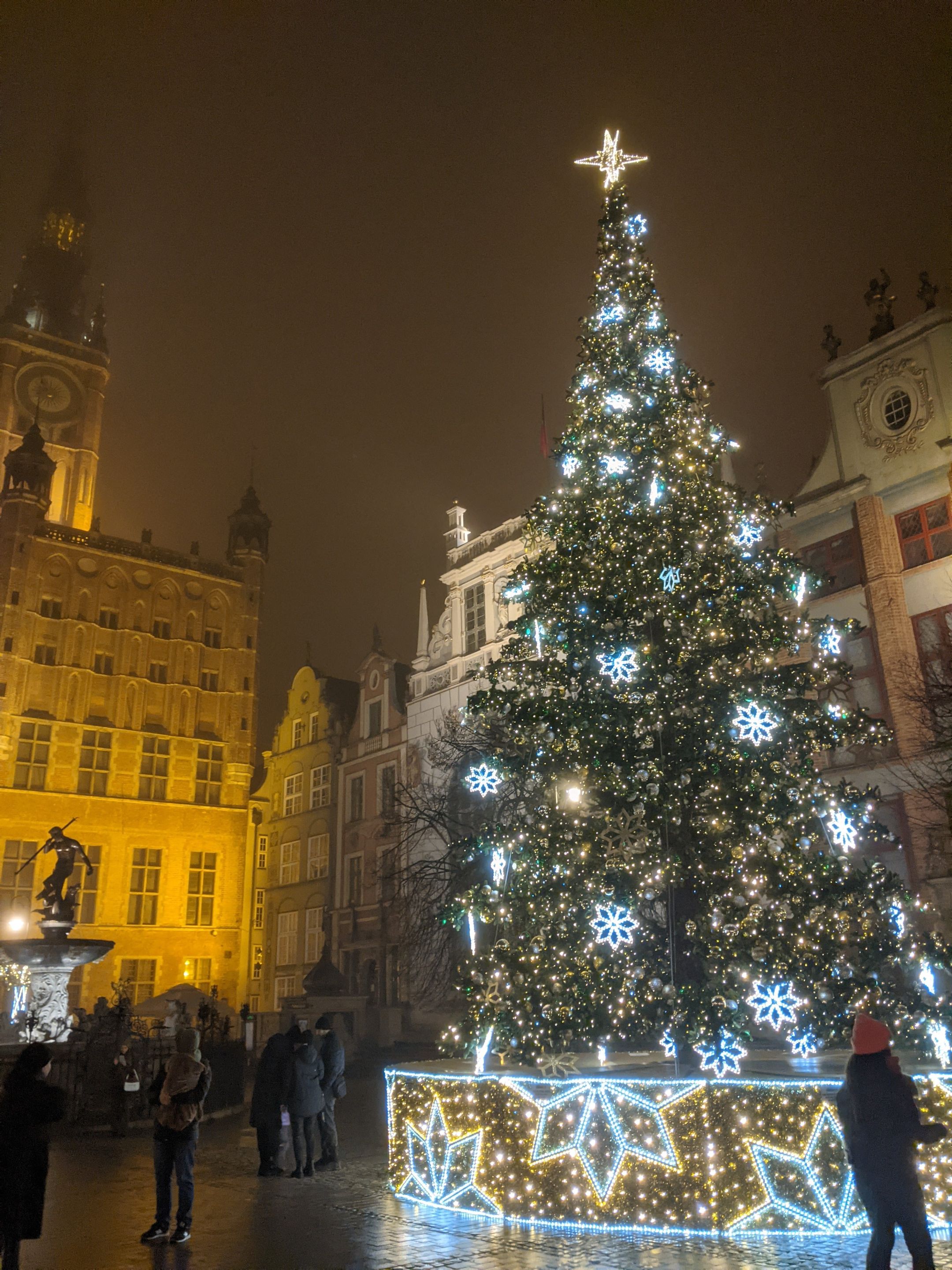
Its center is the Long Market, which exceptionally is not the central square, but is a wide street transverse from the Motława River. The pride of the Long Market is the Fountain of Neptune (god of the seas) and the buildings of the Artus Court, the Steffens House (the so-called Golden House) and the Main Town Hall.
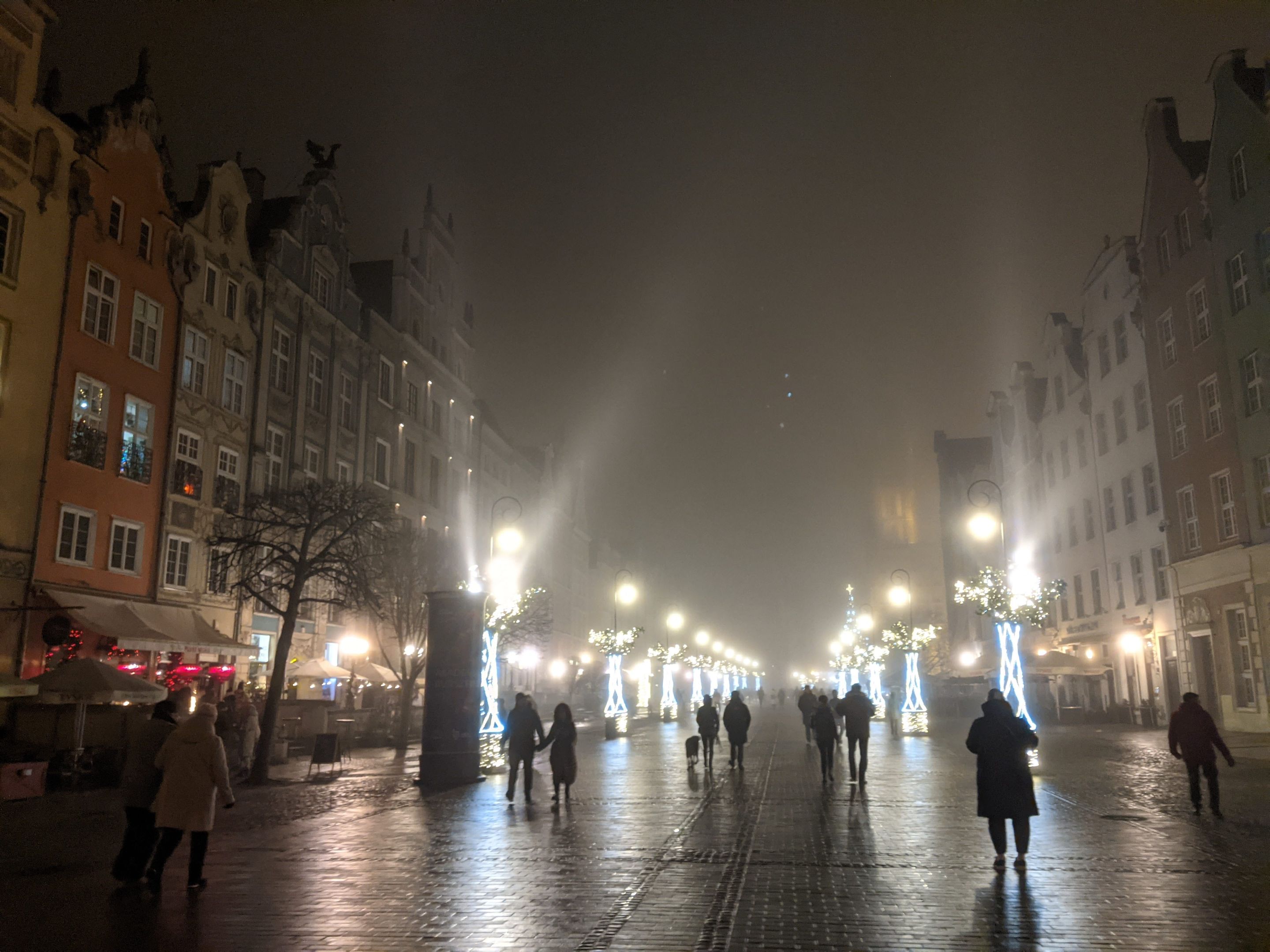
Jego centrum to Długi Targ, który wyjątkowo nie stanowi centralnego placu, ale jest poprzeczną od rzeki Motławy, szeroką ulicą. Ozdobą Długiego Targu jest Fontanna Neptuna (boga mórz) oraz budynki Dworu Artusa, Domu Steffensów (tzw. Złota Kamienica) oraz Ratusz Głównego Miasta.
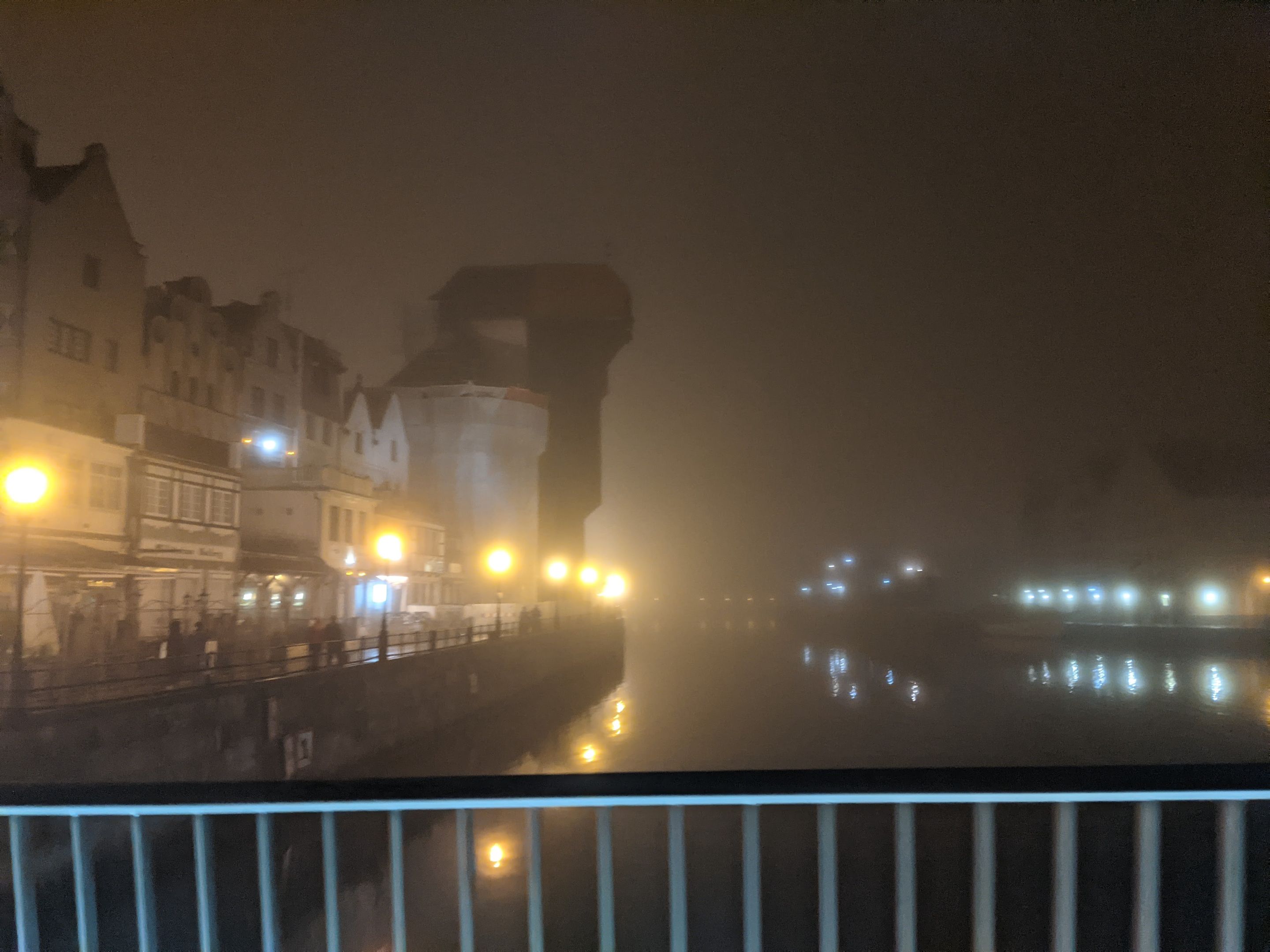
The center of the city's port life was the Motława River - a river with a sluggish current, which flows from Kociewie from Szpęgawskie Lake. From a height of 67 meters above sea level, it flows for 65 kilometers to the Vistula River in Gdańsk.
Centrum życia portowego miasta była Motława - rzeka o ospałym nurcie, która płynie z Kociewia z jeziora Szpęgawskiego. Z wysokości 67 metrów nad poziomem morza płynie przez 65 kilometrów do Wisły w Gdańsku.
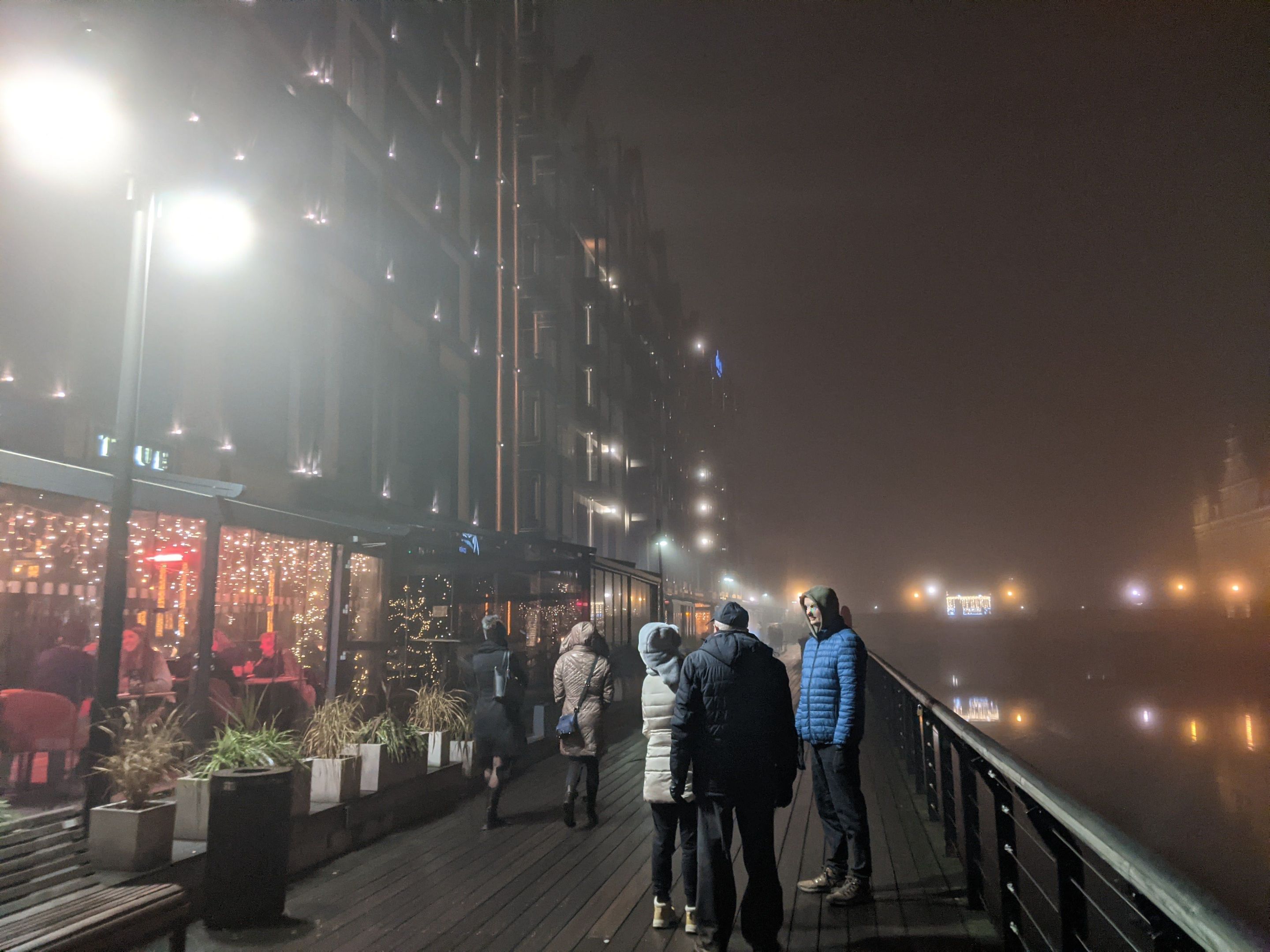
Today, the Motława River divides Gdańsk into two parts - the historic Main Town with old tenement houses and water gates and modern buildings, which were built on the ruins of former granaries. It is Wyspa Spichrzów today serving as a restaurant, entertainment and hotel district.
Dzisiaj Motława dzieli Gdańsk na dwie części - historyczne Główne Miasto ze starymi kamienicami i bramami wodnymi oraz nowoczesną zabudowę, która powstała na gruzach dawnych spichlerzy. To Wyspa Spichrzów dziś pełniąca funkcję dzielnicy restauracyjnej, rozrywkowej i hotelowej.
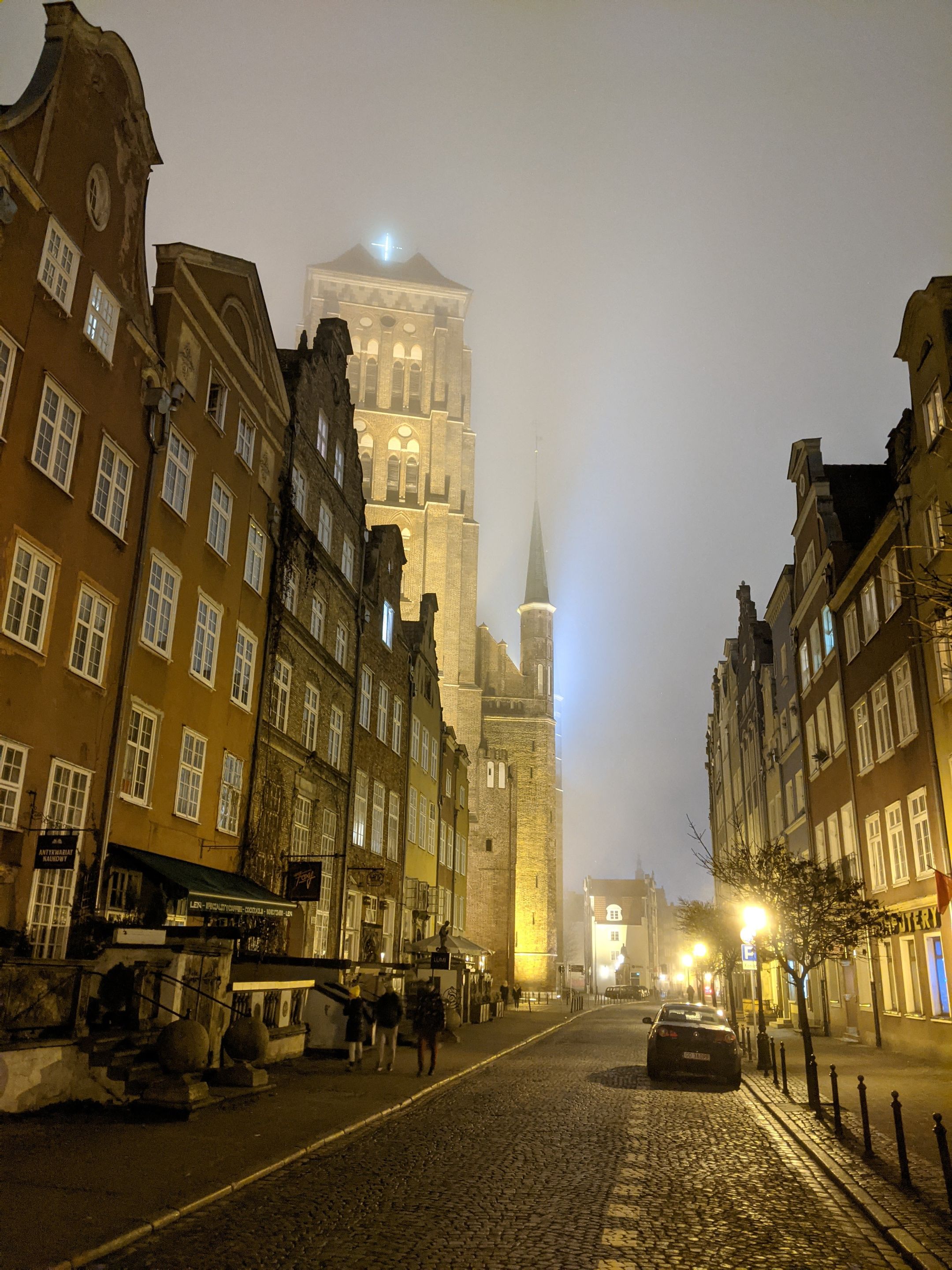
Piwna Street stretches from the Great Armoury (the building of the former municipal arsenal, today the Academy of Fine Arts) to St. Mary's Basilica. The street was famous for its brewers and the Jopean beer they produced here. Before the war, this street was called Jopen Beer Street (Jopengasse). Beer is several times more expensive than regular beer - I had the pleasure to drink a recreated vision of this taste from years ago and I put a link to that report.
Ulica Piwna ciągnie się od Wielkiej Zbrojowni (budynek dawnego miejskiego arsenału, dziś Akademia Sztuk Pięknych) po Bazylikę Mariacką. Ulica słynęła z browarników i wytwarzanego przez nich tu piwa jopejskiego. Przed wojną ulica ta nazywała się właśnie ulicą 'Piwa Jopejskiego' (Jopengasse). Piwo jest kilkukrotnie droższe od zwykłego piwa - miałem przyjemność pić odtworzoną wizję tego smaku sprzed lat i zamieszczam link do tamtej relacji.
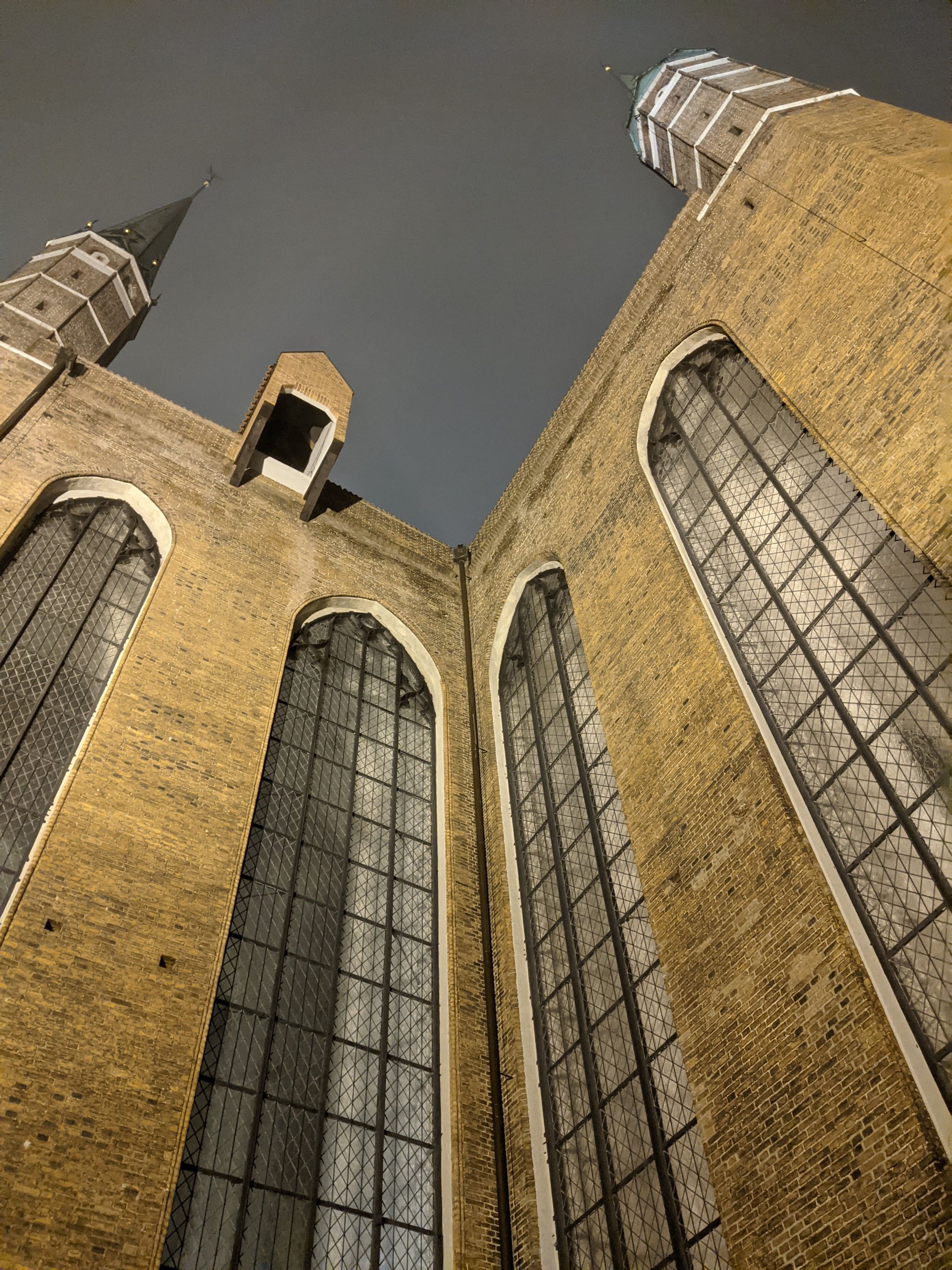
Piwna Street reaches St. Mary's Basilica towering over the city. This is one of the largest brick temples in Poland. The huge cubature of the temple was to show the world the greatness and wealth of the port of Gdańsk.
Ulica Piwna dochodzi do górującej nad miastem Bazyliki Mariackiej. To jedna z największych świątyń ceglanych w Polsce. Olbrzymia kubatura świątyni miała pokazać światu wielkość i bogactwo ówczesnego portowego Gdańska.
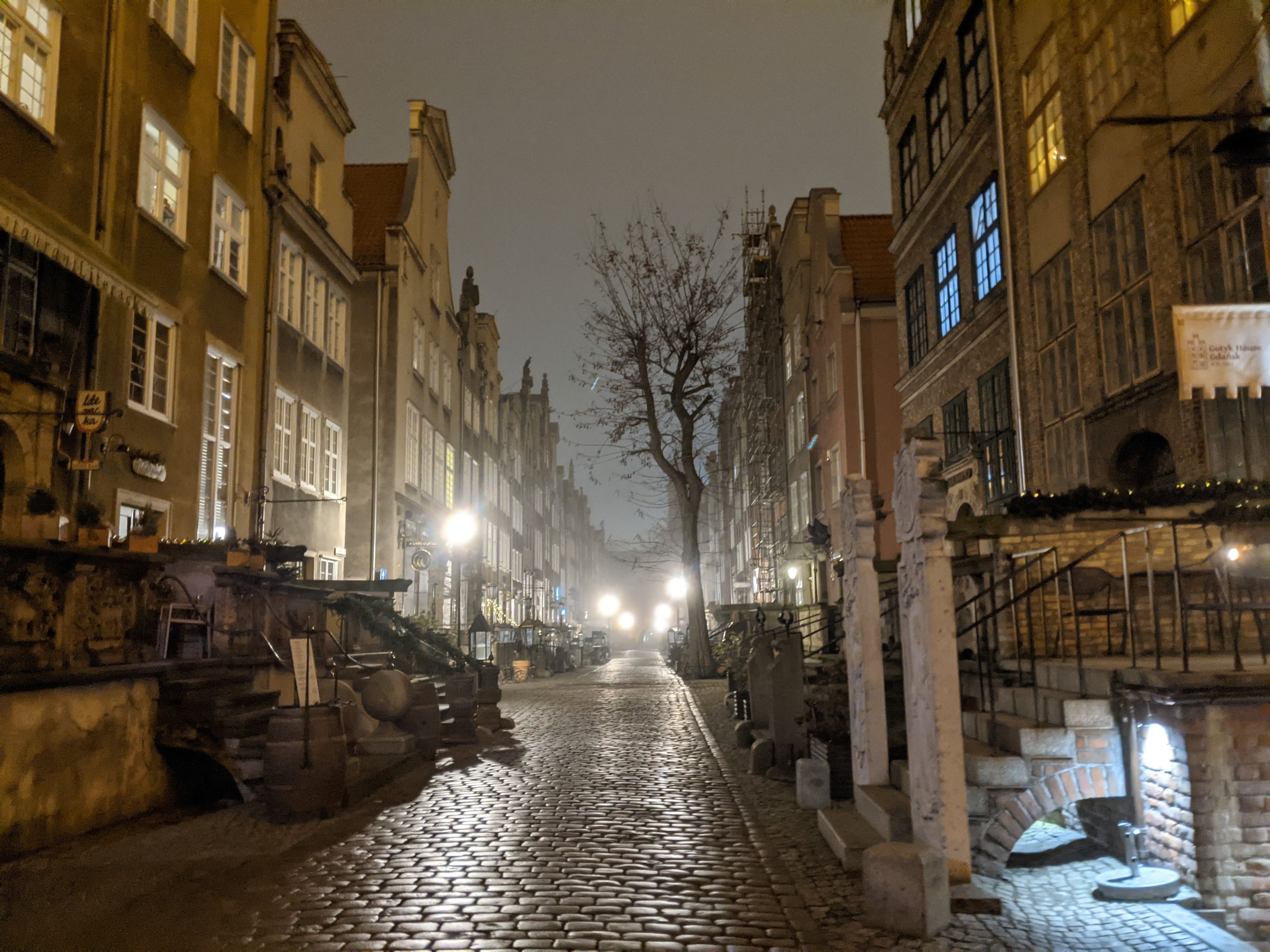
The flagship of old Gdańsk is Mariacka Street. Characteristic elements are lintels that look like terraces in front of the entrance to the tenement house. They were also decorative buildings of sewage flowing in the gutter. Also unique here are the decorative finials of the gutters, the so-called gargoyles. This is how basically all the streets of the center of Gdańsk looked like until about 1850.
Wizytówką dawnego Gdańska jest ulica Mariacka. Charakterystyczne dla niej elementy to przedproża, które wyglądają jak tarasy przed wejściem do kamienicy. Były one również ozdobną zabudową płynących w rynsztoku ścieków. Wyjątkowe są tu również ozdobne zwieńczenia rynien, tzw. rzygacze (gargulce). Tak wyglądały w zasadzie wszystkie uliczki centrum Gdańska do około 1850 roku.
And that's the end of our walk together. Live it lasted about 30-40 minutes. The bitter cold did not make it easier to hike, and the emptiness on the streets reminded me of my student days, when in winter you were looking for entrances to party cellars.
I to koniec naszego wspólnego spaceru. Na żywo trwał on około 30-40 minut. Przejmujące zimno nie ułatwiało wędrówki a pustki na ulicach przypominały mi czasy studenckie gdy zimą szukało się wejść do imprezowych piwnic.
